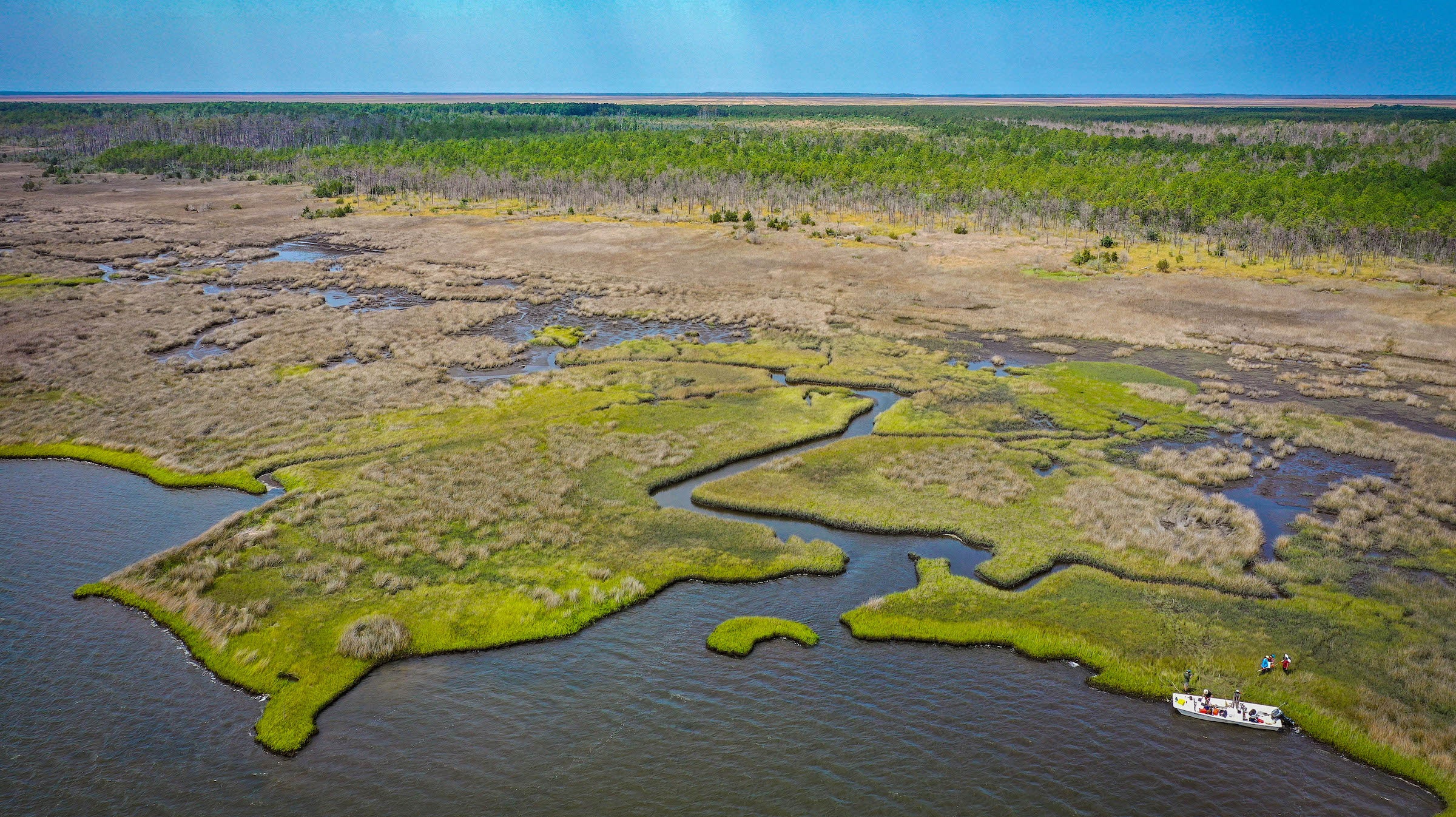Adding Predictability to the Carbon Market
Salt marshes are a hot but unpredictable commodity in the carbon market.

Credit: Josh Himmelstein
Salt marshes store a vast amount of carbon, and industries and businesses are looking to this habitat to offset CO2 emissions by buying carbon credits, restoring marsh or conserving marsh. The problem lies in the fact that carbon accumulation rates for salt marshes vary wildly, making it challenging to put a consistent price per acre of salt marsh for a carbon offset amount.
A recent study in Communications Earth & Environment, a journal in the Nature Portfolio, helped disentangle the variability. The research provides more information to accurately assess the amount of carbon in salt marshes for carbon credits.
Nathan McTigue, a research associate with The University of Texas Marine Science Institute, and co-authors at the University of North Carolina at Chapel Hill found that carbon accumulation rates are highest at young and expanding salt marsh edges. These marshes are susceptible to loss by armoring and sediment starvation from dams. On the other side of the time scale, they found that older marshes near the upland habitats have more stored carbon per pound despite lower average accumulation rates. So, while the young sections of marsh build carbon up the fastest, the older marshes are also valuable to preserve because they have a higher carbon density, and losing that marsh could release the stored carbon back to the atmosphere as CO2. The old and the young salt marshes are at risk for either direct loss by development or downstream impacts. This research highlights the importance of including the carbon accumulation rates into the carbon credit equation and will help clarify the appraisal of salt marsh restoration projects and landscape conversion in mitigating greenhouse gas emissions.
McTigue's coauthors at the University of North Carolina at Chapel Hill include lead author Carson Miller and coauthors Antonio Rodriguez, Molly Bost and Brent McKee. The research was supported by the North Carolina Sea Grant and the Department of Defense Environmental Security Technology Certification Program.



